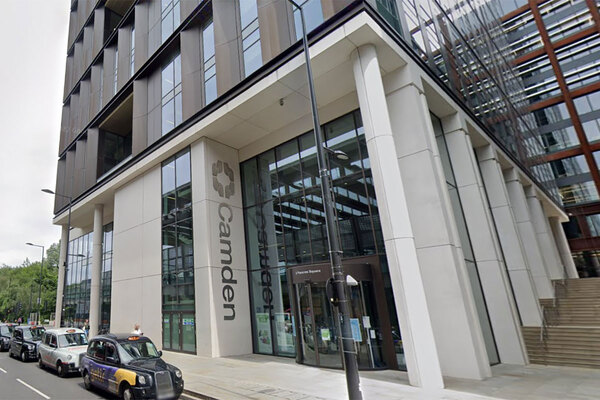How to navigate price volatility and inflation
Price volatility and inflation are throwing social landlords’ plans into doubt, from housebuilding to retrofit. So what are procurement teams doing to contain the problem? Catherine Moore reports. Illustration by Joe Magee
Social landlords are dealing with unprecedented price volatility and inflation. Rents for social tenants have been set below inflation (see box, below). It is clear why this decision was made, but there are knock-on impacts for social landlords. The price of materials is going up faster than their income.
To give a sense of the scale of the problem, Neil Butters, head of procurement at framework provider Procurement for Housing, points to what is happening to landlords that bid for funds to retrofit homes under the Social Housing Decarbonisation Fund (SHDF). The funding, he notes, was “based on cost per property to upgrade thermal efficiency”. But the price to deliver those works, whether labour or materials, may increase before works begin on site.
“This impacts their ability to deliver what they committed to,” Mr Butters says.
“Some SHDF grants just aren’t being spent because in the six months between submitting bids and awarding contracts, the funding no longer covers the cost of doing the works.”
So how bad is it, and what can social landlords do to contain the damage caused by inflation?
Lesley Anderson, interim regional director at the Scottish Procurement Alliance, which delivers frameworks across Scotland on behalf of public sector procurement solutions organisation LHC, identifies similar challenges. She explains that the rise in inflation and higher interest rates are having an impact “on the repairs and maintenance costs for social landlords”, while “material, labour, fuel and vehicle fleet operations are all becoming increasingly expensive”.
Ms Anderson adds: “The inconsistency and fluctuation in material prices and budgeting is proving really difficult for social landlords, making it hard to predict pricing across the year owing to inflation.
“The work priced and planned last year, or even just a few months ago, might be subject to change, so there’s not a lot of fixing prices for a lengthy period of time.”
Pricing issues
When it comes to materials supply, Ms Anderson says that “Brexit and the war in Europe have been impacting costs and availability for more than 18 months now”. This makes it difficult for contractors to “guarantee” pricing for works and for procurement teams to “map out their budgets”. There is also a danger that the “inflated prices could get passed up the chain to clients”.
Meanwhile, the construction sector’s skills and labour shortages mean “contractors can’t confirm capacity, or timescales are slipping due to the skills and labour shortages”, Ms Anderson adds.
The price volatility is borne out by research by Procurement for Housing, with 80% of its supply chain predicting price increases in the next six months.
Mr Butters explains: “I think much of this is impacted by energy costs. Although wholesale energy prices have dropped significantly in recent months, the energy price index has yet to start falling.
“This means that prices on certain products being bought by housing providers, such as boilers or building materials, haven’t yet settled.”
Overall, according to Ms Anderson, the current budget pressures mean it is a “struggle” for social landlords to deliver more social homes for local communities, meet net zero carbon targets and update the ageing building stock to meet higher energy efficiency standards.
Mr Butters says that an additional challenge comes in the need for procurement teams “to work out which price rises are genuine and which ones come from a supplier’s risk management policy”.
He explains: “We know that freight costs and raw materials are beginning to stabilise, and it looks like energy is going in that more positive direction, too. But if you press a supplier for reasons behind their price hikes, they often say ‘inflation’. The problem is that the driving force behind inflation is actually inflation. So, there’s an argument that some suppliers could be inflating prices because everyone else is.”
So what are social landlords to do? According to housing association Clarion, its procurement team has seen an increase in requests received “for pricing reviews related to inflationary pressure on [its] supply base”.
A spokesperson explains: “Our team have employed a rigorous process for managing these requests, where we will require substantial evidence of the validity of any price rises before we can accept them.”
For Clarion, the first step is to “assess whether an increase is a contractual requirement”. After this, the housing association works with suppliers “on specific cost elements within their pricing to ensure that any changes reflect legislative changes and actual changes to their cost base”.
Clarion says it wants to work with suppliers “to help manage their cost base and to drive efficiency to help offset the pressure and minimise the impact”.
The organisation has, however, found that the impact of the price requests has been “the diversion of resource away from value-generating procurement delivery”, such as increasing value for money, driving efficiency improvements and social value and sustainability objectives.
“However, we are seeing a levelling-out of demand for pricing reviews and now the focus has fully returned to these other areas of delivery,” the spokesperson adds.
According to Mr Butters, procurement teams should “treat suppliers fairly and empathise with the challenges they face”, but “also challenge them where appropriate”.
He adds: “Do this by informing yourself. Find out about your suppliers’ cost base, don’t just let them tell you their reasons for price hikes – do your own research.”
Collaboration
The Clarion spokesperson adds: “At Clarion, we see our suppliers as part of our business, working towards the delivery of our organisational goals and therefore we have to balance the need to manage our own costs with the cost pressures our partners are experiencing.
“We have in place solutions that provide a full understanding of our suppliers’ cost base, so the real impact of inflation can be made visible. For example, we have visibility of all elements of our suppliers’ cost base, from materials and labour through to overheads and margin, so that we can make the right decisions on any price increase.”
The organisation also reviews its specifications, logistics routes and service requirements “to identify opportunities to drive efficiency” without impacting customers.
For Ms Anderson, a key factor in all of this is collaboration.
The rent cap
In the Autumn Statement, chancellor Jeremy Hunt placed a 7% cap on the amount social landlords can increase rents for tenants. Although this is still a big rise for tenants, it is well below inflation.
Ms Anderson of the Scottish Procurement Alliance says that while the price cap is “good for tenants, it limits the ability for landlords to raise additional funds to help cope with their own rising costs”. This reduces money allocated for upgrades, with smaller budgets generally meaning organisations are forced to “reassess priorities” and “realign their budgets”.
“There’s less investment available for the likes of cyclical maintenance projects and the ‘nice-to-have’ projects,” she says.
“In addition, the risk is if landlords don’t keep on top of the upkeep of properties, they will require further maintenance or more costly intervention further down the line, which could impact on their future capital programme budgets.”
She explains: “It’s paramount that solutions are developed collaboratively, with the opportunity to drive inefficiencies out and plan, deliver and schedule works in a more cost-effective way without reducing quality or squeezing the margins.”
Early engagement between clients and contractors is also key. Ms Anderson sees scope for “inviting feedback on any areas of concern to help contractors to de-risk the project and ensure the most competitive rates can be provided”. It is also important to secure “supply chain partners and materials in advance” where possible, she argues.
Ms Anderson adds: “We don’t want somebody to come in with low costing they can’t sustain over a period of time.”
Clients could also consider having mechanisms within contracts to allow for rising costs to ensure the supply chain remains sustainable.
“What happens quite often is somebody wants to fix a contract for a period of time,” Ms Anderson says. “Obviously the contractor is going to build in that risk because in the current market, it’s impossible to do that so they’re inflating, probably unnecessarily, sometimes to cover the risk of that. But if you build in mechanisms throughout the duration of the contract, you can do an ongoing review of it.”
Open book costing can help to ensure value for money is being delivered and supplier incentivisation, such as a gain share, could also help.
In an open book contract, both parties agree on which costs are remunerable and the margin that the supplier can add to these costs. The project is then invoiced to the customer based on the actual costs incurred, plus the agreed margin. The approach improves transparency of costs and encourages collaboration.
Overall, Ms Anderson stresses that early supplier engagement “means specialism around design, material availability and alternative compliance specifications can be brought to a project to provide best value solutions to clients”.
“We don’t want somebody to come in with low costing they can’t sustain over a period of time”
She adds: “You often find clients will specify particular products which might be expensive, whereas if they’ve got early supplier engagement, the supplier can get involved at that level and offer potential alternative options that would save money but still give the required output and provide best value.
“This all mitigates project risks and ensures project budgets are directed where they will have the best outcomes.”
The Clarion spokesperson adds: “Our approach allows for a more open conversation on how inflation is impacting on our suppliers and how we can realistically support them when it is appropriate to do so. However, we do expect our suppliers to look for efficiencies in their own processes to ensure the impact to Clarion is minimised. We will not accept price increases that are simply passed through.”
Mr Butters also believes that “scenario planning” will “help procurement teams to keep one step ahead”.
“From events over the past few years, we know it’s hard to predict what will happen next,” he says. “That means scenario planning for two opposite ends of the spectrum and everything in between.”
Ms Anderson adds: “Monitoring the market allows social landlords to anticipate potential price changes and adjust their procurement strategies accordingly. It can help them stay ahead of the curve and avoid unexpected cost increases.”
Overall, Mr Butters feels that despite price volatility and high inflation, many opportunities remain and “social housing procurement teams are well placed to harness them”.
He adds: “But you have to adopt a commercial mindset. For example, contractors may want to secure long-term projects to sure up their order books. That means they might be more willing to negotiate on prices. Think about how you can use the current economic outlook to your advantage.”
In all of this, Ms Anderson highlights the importance of collaboratively discussing learnings.
She says: “Social landlords could share lessons learned with their peers so learnings are being taken forward.”
Sign up for our development and finance newsletter
Already have an account? Click here to manage your newsletters











